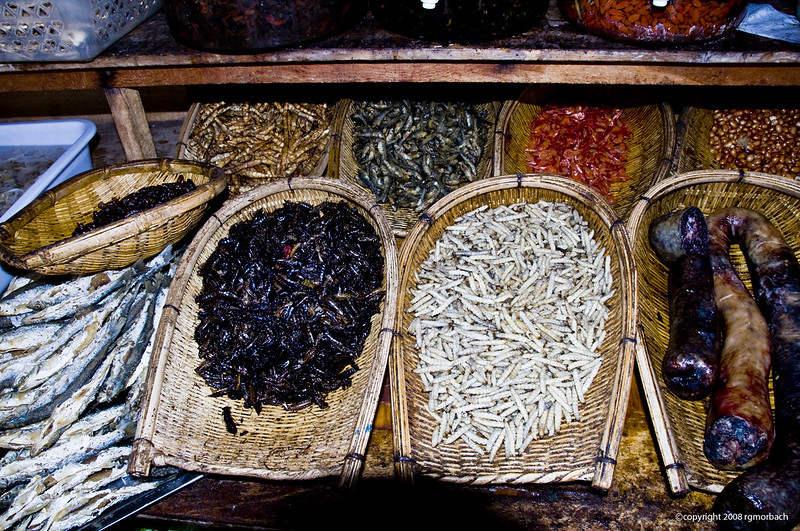These are the foods we could be eating in the future
As global warming and extreme weather accelerate, so will severe food shortages. These foods could be key to human survival.
C limate change is already affecting food production across the world. Desertification, drought, rising seas, melting ice and soil erosion has disrupted the supply of foods people are accustomed to eating by causing crop failure, decreased yields and land loss. As the planet warms, and weather becomes more extreme, these severe food shortages are expected to accelerate.
By 2050, suitable cropland for four of the main global foods – rice, wheat, corn and potatoes – will change and shift across the world. As southern Europe heats up, the land will become dryer, which will limit potato farmers. In Indonesia, corn is predicted to decline by a fifth. Countries will need to adapt, and grow different crops as the climate changes. For example, in West Africa the rich soil may become a more suitable cropland for rice. And farmers in Sicily are already planting tropical fruits such as mangoes and papaya.
Adapting to the warming climate by employing efficient, smart farming methods and reevaluating agriculture, land use and diet will be key for human resilience in the coming years, as well as finding sustainable food sources that can survive as the climate crisis accelerates. These are a few of the foods we might be eating in the future.
Algae
Global seaweed production is being heralded as a major new industry that will play an important part of food security. Seaweed – of which there are 11,000 different species – is perhaps surprisingly nutritious for humans. It’s rich in proteins, carbohydrates, minerals, vitamins (B12, A, K) and essential micronutrients (iodine, zinc, iron). Responsible, sustainable seaweed farming is becoming a key interest for the first time outside Asia. Seaweed farming doesn’t require pesticides or fertilisers, or indeed land, and creates habitats for local marine species. Seaweed farms are starting to open across the world, from the East Coast of the United States to the Netherlands. The Zeewaar farm in the Netherlands has grown by five times in just eight years. All seaweed needs to grow is sun and saltwater, which makes it a resilient and sustainable option as suitable land for farming begins to shrink. The UN believes a new seaweed industry could help alleviate hunger and poverty across the world, which climate change is set to increase.
Insects
It might take a while for consumers to come round to the idea of eating insects, but it’s being heralded as a foodstuff that’s both good for humans and the environment. As agriculture is reevaluated, and more sustainable alternatives to animal protein, which requires significant resources to produce, are sought, insects could be one solution to the problem. Many millions of people around the world already eat insects, and experts suggest processing and disguising insect proteins into familiar foods might make the idea more palatable to Western tastes. The benefits of insect farming compared to livestock production are significant, from lower greenhouse gas emissions to lower land and water use. The EU’s European Food Safety Authority is expected to authorize the sale of edible insects in Europe in late 2020, which will open up the potential for mass production.

Insects on sale in China. Photo by RenatoMorbach
Edible wild greens
In another challenge to perceptions, plants judged as ‘weeds’ could be a sustainable source of nutrients. As countries look to diversify their food production, turning to the resilient plants at our feet, those that survive in poorer soils and extremes of weather, has led people to wonder whether we should be eating the edible wild plants often overlooked. A research group in San Francisco measured the nutrients of a number of foraged ‘weeds’ in urban areas and found they matched the nutrient destiny of cultivated kale. The group also found low concentrations of pesticides and chemicals. Wild edible greens could be a free, nutritious, hardy foodstuff with zero food miles.
Pearl millet and sorghum
In our global monoculture, there is a lack of genetic diversity which leaves species vulnerable to failure. A strain of rice, for example, will have been bred for a high yield, but may have lost genes for adapting to dryer weathers or poorer soils. Crop diversity, then, is crucial in the fight to adapt to climate change. Finding drought-resistant and heat-resistant grains, such as pearl millet and sorghum, has already proved crucial in feeding people in the most arid parts of the world. Sorghum, for example, has been bred selectively over thousands of years to be more resilient to dry and hard environmental conditions, than other crops such as maize and wheat. Sorghum and pearl millet also require less water than crops such as maize. It may be that we will all be eating more of these hardy grains, as more familiar crops fail across the world.
The ideas presented in this article aim to inspire adaptation action – they are the views of the author and do not necessarily reflect those of the Global Center on Adaptation.